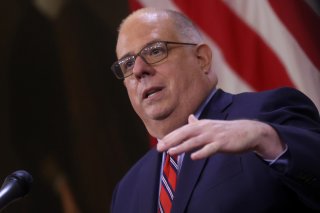Maryland Governor Reverses County Decree Against Private Schools Reopening
There’s a problem in leaving an arbitrary power to shut down private and religious schools in the hands of their biggest competitor.
Invoking its public health powers, Montgomery County, Maryland, late Friday announced that it was banning private and religious schools “from physically reopening for in‐person instruction” through October 1, no matter what combination of precautions (outdoor instruction, ventilation, small numbers only, masks, distancing) they might have been planning to manage risk.
The move sparked an instant furor in the Washington, D.C. suburban community. Gov. Larry Hogan was among the first to voice criticism, and on Monday he signed an executive order withdrawing from county health boards the authority to order school closings, saying that school districts themselves should make that decision for public schools, and that counties should not force private/religious schools to close so long as they are operating within state and federal safety guidelines.
I’d been puzzled about why, in its now‐overturned order, Montgomery County had selected a particular date, October 1, two months out—did that reflect some sort of public health or scientific insight? Then someone pointed out that September 30 is the cutoff date in Maryland to count official public school enrollment. Many real‐world consequences, including but not limited to the magnitude of state and federal grants, depend on the count as of that date.
Note also that at a press briefing July 22, Montgomery County Public Schools (MCPS) Superintendent Dr. Jack Smith said MCPS enrollment of new students was coming in well below expectations, with only about 300 K-12 new students enrolled as of the beginning of July compared with the more than 2,500 that had been projected by the end of August.
The safety issues here are complex and I don’t know what the right answers are, or whether there is exactly one such answer right for all kids and schools. While Montgomery County and nearby areas have had a lot of success getting COVID-19 transmission levels down, both the local prevalence of the virus and the state of knowledge about transmission and risk change constantly.
But I can see why there’s a problem in leaving an arbitrary power to shut down private and religious schools in the hands of their biggest competitor.
This article first appeared in the Cato Institute's blog.
Image: Reuters

